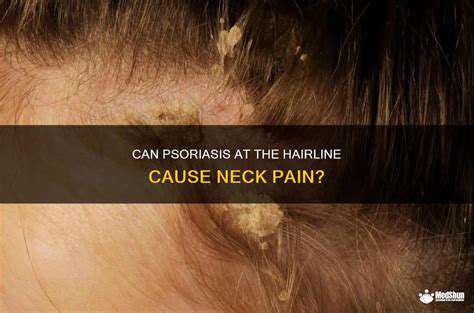Common Causes of Pain at the Hairline

1. Tension Headaches
Tension headaches are a common culprit when it comes to pain at the hairline. These headaches often arise from muscle tension in the neck and scalp, leading to discomfort that can feel like it's radiating outward.
Many individuals experience this type of headache as a result of stress, poor posture, or even prolonged screen time. Identifying and addressing these triggers can significantly alleviate pain at the hairline.
2. Migraines and Cluster Headaches
Migraines and cluster headaches can also manifest as pain focused at the hairline. Migraines typically come with other symptoms like nausea and sensitivity to light, while cluster headaches are characterized by intense, localized pain.
Understanding the specific type of headache can guide appropriate treatment and management strategies, leading to a better quality of life for those affected.
3. Skin Conditions and Infections
Certain skin conditions, such as dermatitis or folliculitis, can cause pain at the hairline due to inflammation or infection of the hair follicles. These conditions might result in redness, swelling, and tenderness in the affected area.
Proper diagnosis and treatment by a healthcare professional are crucial, as these conditions may require topical or systemic medications to resolve. Maintaining good hygiene and addressing any persistent symptoms promptly is essential for effective management.
What You Can Do to Alleviate Hairline Pain
1. Identify Underlying Conditions
Understanding the root cause of your hairline discomfort is crucial for effective treatment. Many underlying conditions can lead to pain in the scalp area. Common issues include tension headaches, migraines, or scalp conditions like psoriasis and eczema.
Visiting a healthcare professional is essential for a proper diagnosis. They may perform a physical examination or recommend tests to rule out conditions such as shingles or other infections that can cause localized pain.
Inflammatory conditions may lead to pain, tenderness, and discomfort in the scalp region. Identifying these conditions allows for targeted treatment that addresses both the symptoms and the underlying issue.
Keeping a symptom diary can also help track when the pain occurs and any potential triggers. This information can be invaluable during consultations with healthcare providers.
2. Home Remedies to Soothe Pain
If you're dealing with hairline pain, several home remedies may provide relief. One popular option is applying a cold compress to the affected area. The cold can reduce inflammation and numb the pain.
Additionally, practicing relaxation techniques can help alleviate tension that may be contributing to your discomfort. Techniques such as deep breathing, meditation, and yoga can effectively reduce stress and promote overall scalp health.
Herbal treatments, such as tea tree oil or lavender, could also be beneficial due to their anti-inflammatory properties. Diluting essential oils and massaging them into the scalp can improve circulation and relieve pain.
Staying hydrated and consuming a balanced diet rich in vitamins and minerals supports overall health, which can minimize pain and inflammation in the body, including the scalp.
3. Professional Treatments and Therapies
If home remedies are not effective, consider seeking professional assistance. Dermatologists can assist with scalp conditions and may prescribe medicated shampoos or topical treatments to alleviate symptoms.
Physical therapy can be another option if tension or muscle strain is a contributing factor. Therapists can guide you through exercises and stretches that may relieve pain and improve posture, which can have a positive impact on scalp discomfort.
Acupuncture has gained popularity as a natural treatment for various types of pain, including headaches and scalp pain. This holistic approach targets specific points in the body to promote healing and pain relief.
Over-the-counter pain relievers, such as ibuprofen or acetaminophen, can also be helpful in managing more acute pain episodes. However, always consult a healthcare provider for recommendations that suit your specific condition.
4. Lifestyle Adjustments for Long-Term Relief
Making lifestyle changes can be instrumental in alleviating hairline pain over the long term. Regular exercise is beneficial for overall health and has been shown to help reduce stress and muscle tension.
Incorporating relaxation techniques into your daily routine can also prevent stress-induced pain. Consider setting aside time for activities that promote relaxation, such as reading, meditation, or engaging in a hobby you enjoy.
An ergonomic workspace setup can alleviate tension in the neck and shoulders, which may contribute to hairline discomfort. Ensure your workstation is adjusted to meet your needs, promoting good posture while working or using digital devices.
Lastly, ensure you are getting adequate rest and sleep, as fatigue can exacerbate pain symptoms. Establishing a soothing bedtime routine may help improve the quality of your sleep, leading to better overall well-being.